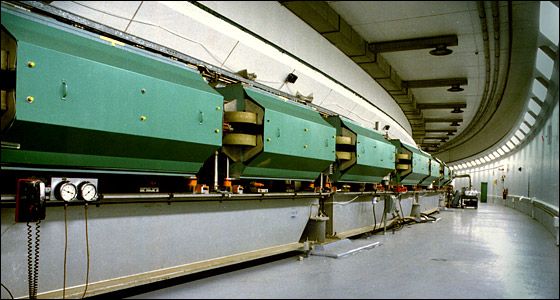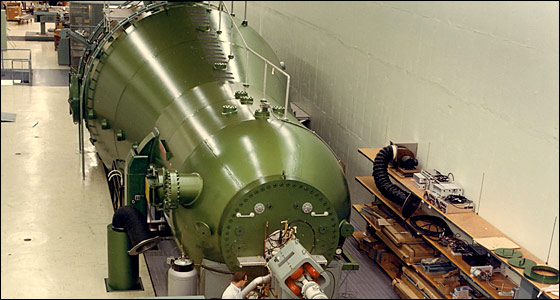BNL Timeline
APS Historic Site Home > BNL Timeline > 1969-1979
1969-1979

The Alternating Gradient Synchrotron set records by accelerating protons to 33 billion electron volts and led to numerous discoveries
The Alternating Gradient Synchrotron (AGS) continues to yield scientific advances, including the discovery of the J/psi particle, which led to the 1976 Nobel Prize in Physics; and the discovery of the charmed baryon, a three-quark particle revealed through the seven-foot bubble chamber at AGS.
The same is true at the High Flux Beam Reactor, where scientists propose spin and charge separation in one-dimensional conductors, make a direct measurement of electron-phonon coupling in superconductors, and study critical phenomena in magnetic and structural phase transitions.
Brookhaven researchers are the first to use computing and moving pictures to study the system of spins in a model magnet. Also using large computers, BNL scientists apply the Monte Carlo method (statistical sampling strung over a three-dimensional lattice) to relativistic quantum theory, the primary tool of elementary particle physics.

The Tandem Van de Graaff facility was for many years one of the world's largest electrostatic accelerator facility
Three new facilities come online: the Tandem Van de Graaff, one of the world’s largest electrostatic accelerator facilities; the Brookhaven Linac Isotope Producer, which generates radioisotopes for biomedical and industrial applications; and the Scanning Transmission Electron microscope, one of only three high-resolution microscopes in the world that can easily image single heavy atoms.
Brookhaven researchers also investigate light-induced electron transfer reactions — useful for complex chemical reactions like photosynthesis and corrosion — and develop a new particle detection method, liquid argon calorimetry.
Meanwhile, BNL scientists were hard at work on a novel design for the magnet configuration of storage rings dedicated to synchrotron radiation research. This design, called the “Chasman-Green lattice,” was the basis for the National Synchrotron Light Source and many other light sources around the world.